Finding Light in Darkness: The Artist Who Fought and Painted in Gaza
Matan Skopski found himself on the front lines in Gaza, capturing his intense experiences through art. His nighttime paintings, born from the war's darkness, have transformed into a powerful exhibition in the Knesset, illustrating the strength of creativity and the glimmers of light in the hardest moments.
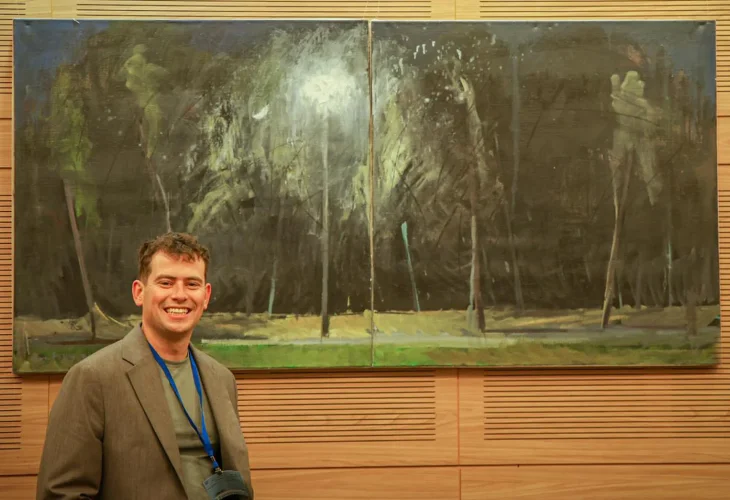 Matan Skopski with one of his paintings at the Knesset exhibition
Matan Skopski with one of his paintings at the Knesset exhibitionNothing could have prepared artist Matan Skopski for the reality that the works he created during the war would become his most significant exhibition, showcased at the Knesset, giving strength to so many people. Nor could anything have prepared him for finding himself repeatedly called up for reserve duty this past year, fighting in the most dangerous areas within Gaza.
At 27, Skopski has been painting and creating since he was 12. "I studied the craft in Israel and also in Florence, Italy," he shares. "Currently, I'm finishing my film studies at Sam Spiegel, and I envisioned further developing my skills and working in the field."
Like many others, the war caught Skopski by surprise, drastically altering his plans. But one thing it couldn't take was his deep love for painting. During his extended reserve service, he continued to paint passionately, channeling his wartime experiences into his art.
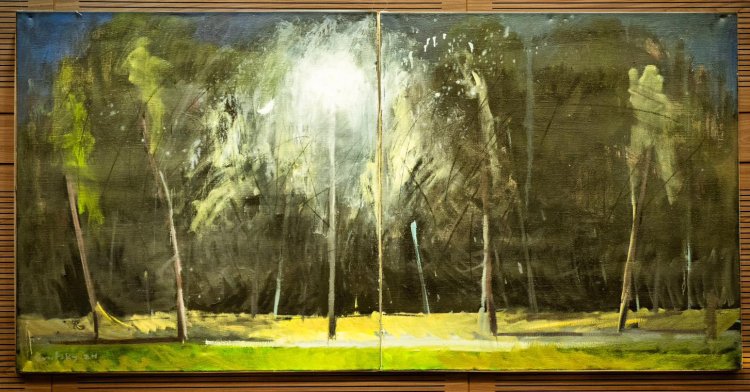 "The first time I felt fear." In the Shemoni Forest
"The first time I felt fear." In the Shemoni Forest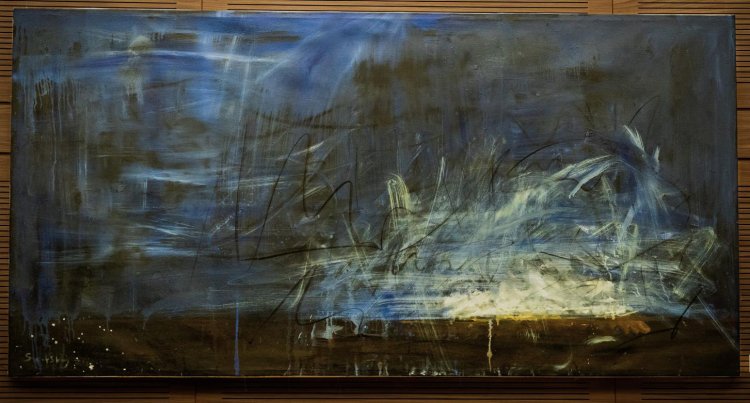 Kibbutz Gaza from the sea
Kibbutz Gaza from the sea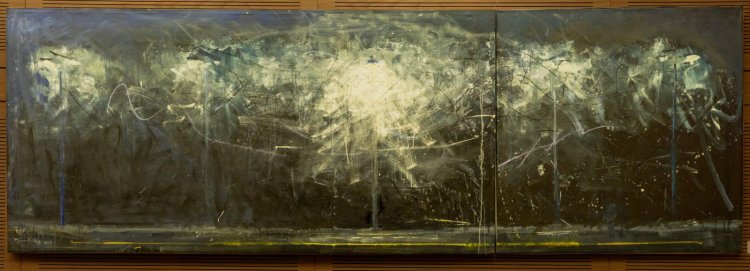 Road 232
Road 232Painting from Fear
"I was called up under emergency orders during Simchat Torah," he recalls the war's early days. "The first week, we fought terrorists in the settlements, and then inside Gaza. Honestly, it was a confusing time, hard to remember in detail. But there is one moment I remember vividly — one night, as the tanks halted and we stood beneath the trees. Until then, there hadn't been time to feel, and suddenly, a fear I didn't recognize overcame me. It was the first time I realized how much darkness influenced my feelings. It changed something within me.
"We continued fighting in the weeks that followed. When I returned from the first round, I finally went back to painting. Those days, I went out to the street, as always taking my painting tools, and found myself sitting with an easel, paints, and brushes. I ended up painting a night scene, and when I examined it in the studio — I was amazed by the result. I realized I had captured something real; the painting was quite different from what I had planned, and it moved me.
"Then I started creating more paintings and compositions trying to touch what I had captured, asking myself: 'How does one paint darkness? And light in the darkness?' The question was not just about technique; it also touched on the essence, because it's impossible not to feel the last year and a quarter's surrounding darkness, yet also impossible to ignore the shining lights within it.
"As I painted more, the nightscape scenes gained names. The main road I painted became Road 232, the distant settlement lights turned into Kibbutz Gaza from the sea. There's also the 'Shemoni Forest' painting in the Gaza envelope, which, for me, is the flagship of the exhibition because it encapsulates the first fear I experienced during that first week when the war broke out, and where I began to understand darkness."
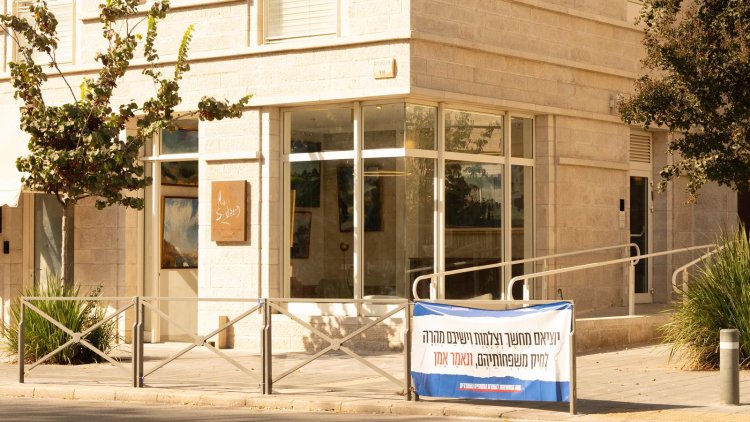 Skopski's gallery
Skopski's gallery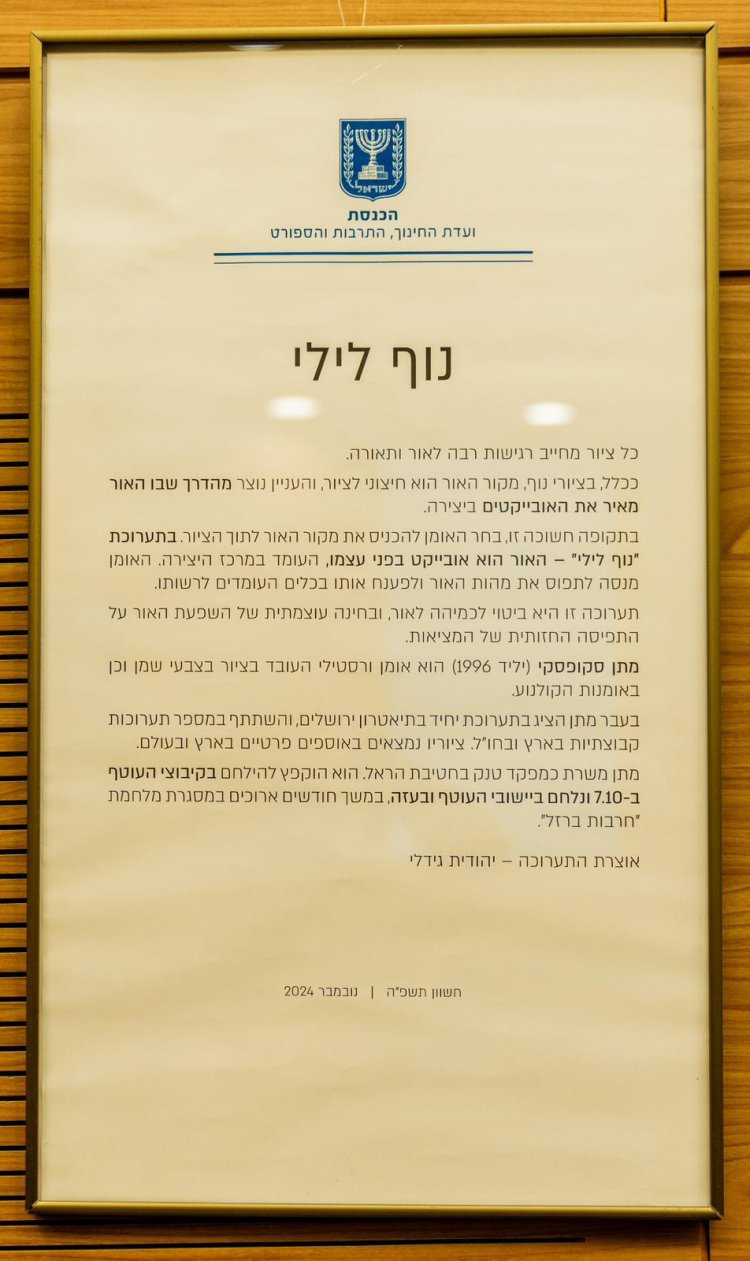
Gallery Dreams
After an approach by the Knesset's Education Committee exhibition curator, Yehudit Gidli, Skopski painted additional pieces for the exhibition and titled it "Nightscape." The exhibition was later displayed at the Knesset, receiving particularly moving and wonderful reactions.
However, Skopski soon found himself back in reserve duty, this time in Beit Hanoun, and later working on expanding the Gaza strip's Netzarim route. Transitioning between reserve duty and civilian life wasn't easy, even more so returning to fight. "But when I was released again, between the second and third rounds, I decided to pursue another dream — opening a gallery," he says. "It's a dream I've had for some time, planning to open a gallery to showcase my paintings alongside works from other artists I respect.
"Initially, I thought of waiting until after the war, but I quickly realized that part of our victory isn’t just military but also practical. Continuing life alongside the war is itself a victory. So, I seized every spare moment to establish the gallery. Even during the war — whenever I had a short break, I didn’t rest, but worked on opening the gallery on Bethlehem Road in Jerusalem, which currently mainly displays my paintings, but I intend to also showcase works from other artists soon. The grand opening is expected next month."
But how do you find time for all this?
"As a fighter, I've had many conversations with other high-ranking soldiers, and there's an interesting saying among us: 'It's easier for someone who does a lot to do things than for someone who doesn’t,' which I relate to very much. Because while I’m always high on adrenaline during combat, it pushes me to stay alert and driven even during breaks, investing more and not resting until the gallery is completely ready, with Hashem’s help."
(Photo: Amitai Rosenberg)

